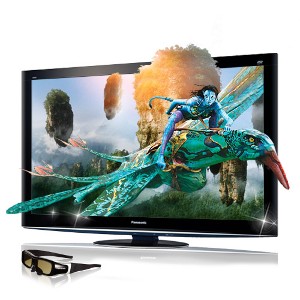December 24, 2010 by Grant Clauser

Click here to view the full article
If you’re shopping for a 3D TV this time of year, chances are you’re going to end up with one of the bundle deals that the major TV makers are offering. Probably the most aggressive in this approach is Panasonic, which has been promoting 3D plasma bundles that include a plasma TV, 3D Blu-ray player, three sets of compatible 3D viewing glasses and a copy of the 3D Blu-ray “Avatar.” In fact that last item, the 3D “Avatar,” is only available by purchasing a Panasonic bundle until sometime in 2012 (other makers offer similar movie exclusives). This Panasonic plasma is one of the TVs available as a bundled product, and also one best performing TVs I’ve seen in a while.
The TV, a 50-inch TC-P50VT25 (VT25 for short) comes from Panasonic’s top line. Similar models are available in 54-, 58-, and 65-inch versions. It uses the company’s latest 1080p Infinite Black Pro panel with a 600Hz sub-field drive and sports THX certification and THX picture mode.
The VT25, like all of Panasonic’s TVs, wears a rather conservative design compared so some of its competition. You can spot a Panasonic from 50-feet away because they tend to have the widest bezels (outside Runco) of the major brands. The glossy black bezel is about 2-inches wide around most of the screen, which is the about the same as it’s been for a couple of years. Other TV makers are trying their best to make the bezel as thin as possible (easier done on LCDs than on plasmas), but Panasonic seems to like the look and is sticking with it. The TV sits on an easily-assembled, small, oval-shaped base, though to me it seems a bit wobblier than on models with larger bases. Most owners will opt to wall mount it anyway.
The TV’s remote has large buttons that are easily read, though some seem a bit redundant or not clearly named. For example, the remote includes buttons named Viera Cast, Viera Tools and Viera Link. The need for branding resulted in a bit of Viera overload. Then there’s Menu and Sub Menu, Format (which refers to aspect ratio) and a few others. The user will get accustomed to them, but I prefer a little more clarity. ….
Click here to view the full article
